Where Is a Unicorn Mentioned in the Bible
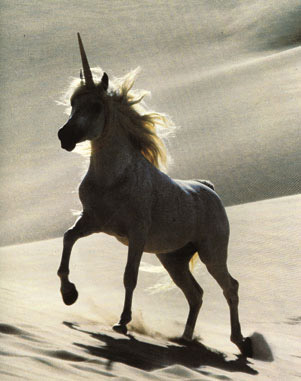
What? Unicorns in the Bible? Yes, they are mentioned nine times.
Could it be unicorns really existed?
A 1967 hit song by the Irish Rovers tells a fanciful story of how Noah couldn't persuade any "silly" unicorns to get on board the Ark since they wanted to play in the rain.
But, what does the Bible say? Were there really unicorns in ancient times?
The word "unicorn" appears in the King James Version nine times – in Numbers 23:22 and 24:8, Deuteronomy 33:17, Job 39:9,10, Psalms 22:21, 29:6 and 92:10 and in Isaiah 34:7.
What was this biblical unicorn? And why don't later translations of the Bible contain the word?
Numbers 23:22 in the King James Version reads: "God brought them out of Egypt; he hath as it were the strength of an unicorn."
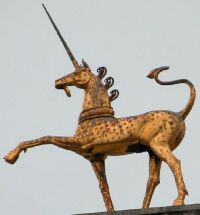
However, the New International Version says: "God brought them out of Egypt; they have the strength of a wild ox."
The New American Standard Bible reads: "God brings them out of Egypt, He is for them like the horns of the wild ox."
And the Catholic Douay-Rheims Bible says: "God hath brought him out of Egypt, whose strength is like to the rhinoceros."
Well, which is it? Unicorn? Ox? Or rhino?
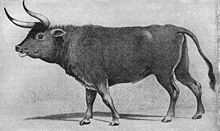
The original Hebrew is the word re'em. What was a re'em? Scholars cannot agree. In the late Jewish author and skeptic Isaac Asimov's Guide to the Bible, he offers this:
"The Hebrew word represented in the King James Version by 'unicorn' is re'em, which undoubtedly refers to the wild ox (an urus or an aurochs) which is ancestral to the domesticated cattle of today. Re'em still flourished in early historical times and a few existed into modern times, although it is now extinct. It was a dangerous creature of great strength and was similar in form and temperament to Asian water buffaloes."
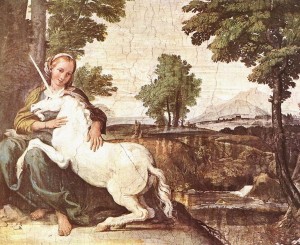
Biblical scholar Bert Thompson, Ph.D., agrees. "When the first Greek translation of the Bible was prepared about 250 B.C., the re'em was already rare in the long-settled areas of the Near East. The Greeks, who had no direct experience with it, had no word for it."
So, in their Septuagint translation of the Hebrew, they used the Greek word monokeros, which means "one-horned." When the Bible was translated into Latin by St. Jerome, he used the Latin word unicornis — which means "one-horned" — but does not necessarily mean a horse with a single horn.
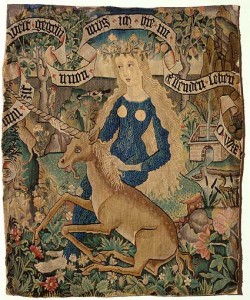
In 1611, rather than speculate, the King James Version scholars just made up a new English word "unicorn," rather as they did withbaptismo, Greek for full-water immersion. In that case, rather than offend King James I, who had been sprinkled, they invented a new English word, "baptism" which could mean "sprinkled, poured or immersed."
"Some people claim the Bible is a book of fairy tales because it mentions unicorns," writes Bible scholar Dr. Elizabeth Mitchel. "However, the biblical unicorn was a real animal, not an imaginary creature. The Bible refers to the unicorn in the context of familiar animals, such as peacocks, lambs, lions, bullocks, goats, donkeys, horses, dogs, eagles, and calves (Job 39:9-12.1).
What kind of animal was it?
"In Job 38-41, God reminded Job of the characteristics of a variety of impressive animals He had created, showing Job that God was far above man in power and strength.
"God points out in Job 39:9–12 that the unicorn, 'whose strength is great,' is useless for agricultural work, refusing to serve man or "harrow (plow) the valley."
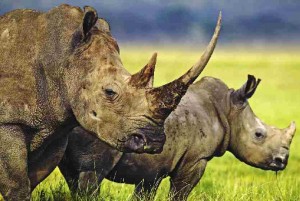
That might explain why some translators believe that the Hebrew word "re'em" actually was describing a rhinoceros — an incredibly moody and unpredictable animal that, unlike buffaloes, elephants or horses, defied any domestication.
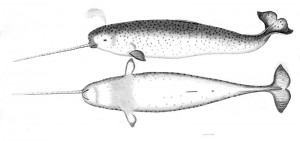
"Modern readers have trouble with the Bible's unicorns because we forget that a single-horned feature is not uncommon," writes Dr. Mitchel.
She points out the rhinoceros has one horn. But so does the swordfish.
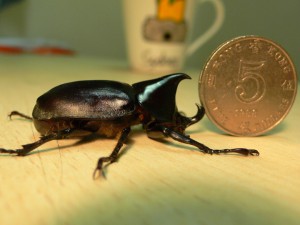
So does the rhinoceros beetle and the narwhal, is a marine arctic relative of the dolphin.
But the bottom line is that we just don't know what kind of animal the re'em was.
"The absence of a unicorn in the modern world should not cause us to doubt its past existence," notes Dr. Mitchel. "Think of the dodo bird. It does not exist today, but we do not doubt that it existed in the past."
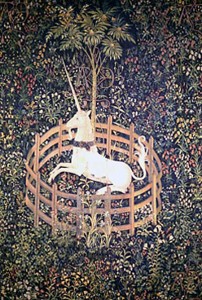
Archeologist Austen Henry Layard, in his 1849 book Nineveh and Its Remains, sketched a single-horned creature from an obelisk in company with two-horned bovine animals. He identified the single-horned animal as an Indian rhinoceros. The biblical unicorn could have been one of those.
"Assyrian archaeology provides another possible solution to the unicorn identity crisis," writes Dr. Thompson. "The biblical unicorn could have been an aurochs (a kind of wild ox known to the Assyrians as a rimu). "
Humans fighting rimus was a popular sport for Assyrian kings. On a broken obelisk, for instance, King Tiglath-Pileser I boasted of slaying rimus in the Lebanon mountains.
Extinct since about 1627, aurochs were huge bovine creatures. Julius Caesar described them in his account of the Gallic Wars as: "a little below the elephant in size, and of the appearance, color, and shape of a bull.
"Their strength and speed are extraordinary; they spare neither man nor wild beast. Not even when taken very young can they be tamed."
There is an account of a 1791 unicorn hunt in Africa, recorded in the 1832 revised edition of Calmet's Dictionary of the Holy Bible, edited by Edward Robinson. He wrote:
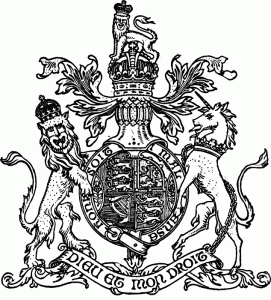
"Dr. Sparrmann, the Swedish naturalist, who visited the cape of Good Hope and the adjacent regions, in the years 1772-1776, gives, in his travels, the following account: Jacob Kock, who had traveled over the greater part of Southern Africa, found on the face of a perpendicular rock a drawing made by the Hottentots, representing a quadruped with one horn."
"Hottentots" referred to African bushmen who live in South Africa's Kalihari Desert. They reportedly told Dr. Sparrmann that the animal was "very much like the horse on which he rode, but had a straight horn upon the forehead. They added, that these one-horned animals were rare, that they ran with great rapidity, and were also very fierce."
Robinson goes on to say that a "somewhat more definite account of a similar animal is contained in the Transactions of the Zealand Academy of Sciences at Flushing (published 1792). The account was transmitted to the society in 1791, from the Cape of Good Hope, by Mr. Henry Cloete.
"This animal resembled a horse, and was of a light-gray color, with white stripes under the lower jaw. It had a single horn, directly in front, as long as one's arm and at the base about as thick. Towards the middle the horn was somewhat flattened, but had a sharp point; it was not attached to the bone of the forehead, but fixed only in the skin.
"The head was like that of the horse, and the size also about the same. The hoofs were round, like those of a horse, but divided below, like those of oxen. This remarkable animal was shot between Table Mountain and Hippopotamus River, about sixteen days' journey on horseback from Cambedo, which would be about a month's journey in ox-wagons from Capetown.
"Mr. Cloete mentions, that several different natives and Hottentots testify to the existence of a similar animal with one horn, of which they profess to have seen drawings by hundreds. He supposes that it would not be difficult to obtain one of these animals, if desired. His letter is dated at the Cape, April 8, 1791."
In the Book of Job, God's list of impressive animals goes on to discuss peacocks, ostriches, horses, hawks, and eagles. God builds up to a crescendo, commanding Job to look at the behemoth (Job 40:15). The behemoth's description seems to match that several species of dinosaur.

The list concludes with the leviathan, a powerful sea creature.
So, does the Bible really talk about unicorns?
Yes. The King James Version uses the term nine times.
Were they horses with single horns coming out of their foreheads?
Probably not.
But the fact is we really don't know — and neither did the translators.
To learn more about translating the King James Version of the Bible, CLICK HERE
CLICK HERE to view a pictorial gallery on unicorns.
To learn about a free giveaway of the DVD "KJB" telling the story of the King James Bible, CLICK HERE
CLICK HERE to take a quiz to see how much you know about the translation of the King James Version of the Bible
AND to see a prank video that includes President Obama riding a unicorn, CLICK HERE.
Where Is a Unicorn Mentioned in the Bible
Source: https://www.beliefnet.com/columnists/on_the_front_lines_of_the_culture_wars/2011/08/are-there-really-unicorns-in-the-king-james-bible.html
0 Response to "Where Is a Unicorn Mentioned in the Bible"
Post a Comment